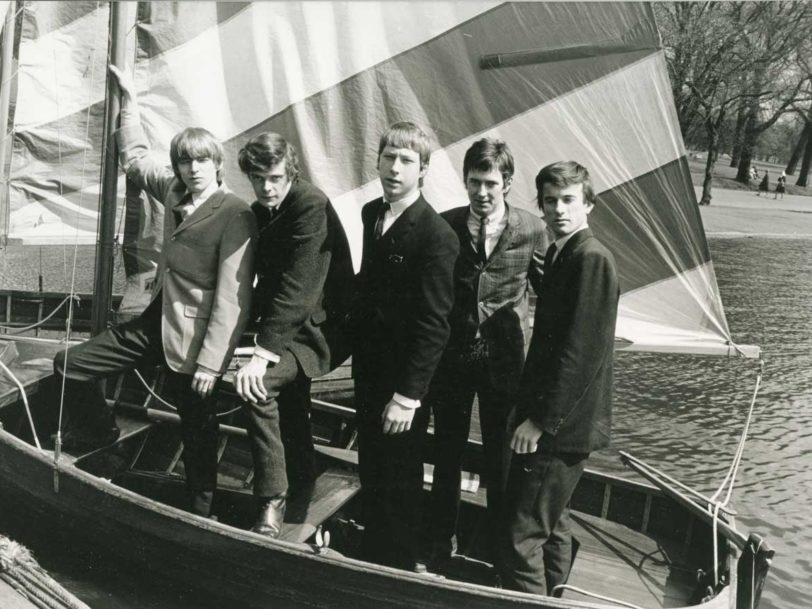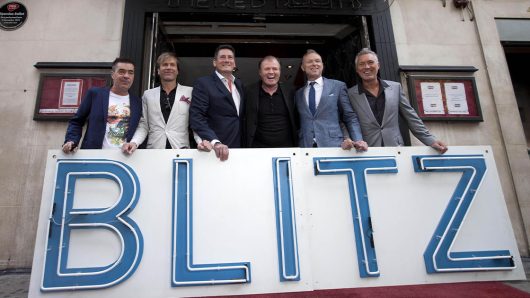Five Live Yardbirds, the debut album by The Yardbirds, is one of the most celebrated live British blues recordings of the 60s, and it contains some of the earliest recordings with guitarist Eric Clapton.
There is an infectious exuberance to the band’s interpretations of ten American rhythm’n’blues songs, which is partly a result of how in-sync the young musicians were with each other. Rhythm guitarist Chris Dreja met singer and harmonica player Keith Relf at Kingston Art College. Relf brought his friends Paul Samwell-Smith and drummer Jim McCarty (who had known each other since attending the same grammar school) into the band before persuading 18-year-old Clapton, then working as a plasterer and bricklayer, to join the band. They chose the name The Yardbirds because it was an American slang term for hobos, rather than as a tribute to the full nickname of jazz saxophonist Charlie “Bird” Parker, which is sometimes mistakenly claimed.
“The answer to our problems”
In early 1964, the group, under the auspices of manager Giorgio Gomelsky, cut a couple of tracks at RG Jones’ studio in Wimbledon, South London, in the hope of landing a recording deal with Decca. The musicians were not happy with the results. “In the studio my inadequacy was there for all to see,” said Clapton, while McCarty said the two cuts, including a Relf original and a cover of Jimmy Reed’s Baby What’s Wrong, “sounded dead”. According to McCarty It helped them decide that “doing a live recording seemed the answer to our problems”.
Gomelsky offered the band to EMI’s Columbia label, who backed The Yardbirds to make their first album as a live recording honouring the tradition of the blues. Five Live Yardbirds was recorded at the Marquee Club in London’s Soho on Friday, 20 March 1964. The band had cultivated a devoted following at the Marquee and some 600 fans were turned away from a packed club after the “house full” notice went up an hour before the gig started. Gomelsky was also sure that an album recorded in front of an audience was the right starting place for “a very good live band”.
“The most blueswailing Yardbirds”
“We played twice as loud and fast as normal,” recalled Dreja of a gig that opened with a version of Chuck Berry’s Too Much Monkey Business, before McCarty showed off his syncopated drumming on Slim Harpo’s Got Love If You Want It. There were loud cheers at the mere mention of Howlin’ Wolf’s Smokestack Lightning. Relf – who plays some neat, improvised harmonica improvisation on the track – occasionally held a boom microphone over the spectators’ heads to catch as much of the cheering and whooping as possible.
Clapton had been introduced to the crowd as “Slowhand”, a nickname that came about in response to his methodical, painstaking methods of changing a guitar string. Whenever he completed the task it would be met by his bandmates breaking into a slow handclap. Clapton and bass guitarist Samwell-Smith shared vocal duties on a cover of the first Sonny Boy Williamson’s Good Morning Little Schoolgirl.
The first half of Five Live Yardbirds ended with (She’s So) Respectable, an Isley Brothers cover, before the group tackled Eddie Boyd’s Five Long Years, which became a staple of Clapton’s later solo work. A zestful interpretation of Bo Diddley’s Pretty Girl was followed by a laidback version of John Lee Hooker’s Louise. The Yardbirds then cranked it up again for Diddley’s I’m A Man, before finishing with a high-energy version of Diddley’s Here ’Tis that showcased the talent of a dynamic young band.
“The audience deserved a medal”
When Five Live Yardbirds was released by Columbia, on 31 December 1964, Gomelsky wrote the esoteric liner notes, in which the Russian-born promoter and agent said that “the idea was to do a live recording of the most blueswailing Yardbirds in one of their ‘natural surroundings’ and no one in the audience was to know what was going on. All one can say is that after that evening’s session the audience deserved a medal, or all of Manfred Mann’s five autographs. Far from remaining in the dark, they were introduced to the most blueswailing band about 12 times.”
The album, which was followed three months later by The Yardbirds’ first Top 10 hit, For Your Love, captured the raw appeal of these crowd-pleasers who had the musical skills to get noticed. Aerosmith’s lead guitarist Joe Perry praised Clapton’s work on Five Live Yardbirds and said that the band’s version of Berry’s Too Much Monkey Business “was a blueprint for a lot of what Aerosmith tried to do”.
Find out how Peter Green replaced Eric Clapton in John Mayall’s Bluesbreakers




